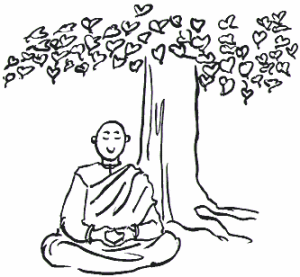Meditation is everywhere. From the news to research and more, everyone is touting the incredible value of meditation. And rightfully so. The practice of meditation seems to be a cure all for every facet of life. The benefits include:
- Increasing your self awareness
- Boosting cognitive and creative thinking
- Reducing stress and anxiety
- Increasing focus and attention
- Improving empathy and understanding
- Healing the body from disease
- Decreasing depression
- Improving quality of sleep
- Increasing memory retention
- Boosting immune system
- Improving willpower
- Increasing compassion and gratitude
And that’s not even all of them. The question then becomes, why the hell don’t I meditate more?
The truth is, I’ve tried. From making it part of my daily routine to using apps like Calm.com or Headspace, none of it has really worked. Despite that, when I do take the time to meditate, I certainly notice the value of doing so. The issue was making it a regular habit. I’m sure I’m not alone here. It’s not the easiest thing to build into your daily routine.
This is when I started examining more closely what meditation truly is. When I looked at it from the bigger picture, meditation seemed to consist of a few core ingredients.
1. Quiet
First and foremost is the need of a quiet or peaceful environment. Often times this is a secluded room or being out in nature, but really, anywhere that you feel at peace is a potential place to meditate.
2. Physical Comfort
Many meditation practices suggest you to be sitting or standing upright, some even allowing you to be lying down. What they are really striving for is having good posture and balance, while still being comfortable. To this end, I think you can be moving too, as long as it is a motion you are comfortable with, like walking or a repetitive movement.
3. Focus
Finally, giving your attention fully to a single thing is paramount. Be that a mantra or your breath or a task, your attention should be focused on that and that alone. It is natural for your mind to wander, but as long as you bring your attention back to the task or action at hand, you will benefit from the practice.
______________
T
here are hundreds of different types of meditation that combine these ideas in different ways: Vipassana, Transcendental, Mantra, Yogic, Zen, Buddhist, and so on. Finding the type that is right for you is no easy thing, but what if you didn’t have to?
What if you could create your own practice based on these core ingredients? What if anything could translate into a form of meditation, if done in a certain way?
The more I’ve thought about it, the less I think such defined forms of meditation are important and the more I’ve realized that you can make anything into a form of meditation. There are no real rules on what your meditation practice looks like.
Anything can be meditation. Enlightenment is what you find between thoughts.
Instead, take a look at your day and see where you could create a meditative practice from something you already do. Maybe it’s making your coffee or watering your garden or commuting to the office or going for an evening stroll. Any and all of these could turn into a form of meditation for you.
For example, if you drink coffee every morning, perhaps you can take this act of making the perfect cup of joe as a form of meditation. Where you are solely focused on the process of grinding the beans, boiling the water, and brewing the coffee. If you did this in the morning, away from distractions, and gave it your full and focused attention, making your morning coffee could be how you meditate.
And it doesn’t need to be a single thing. You could combine multiple practices into forms of meditation, to fit them into a busy day when the need arises. The key is to find things you already do and think about them a little differently.
Just a few small changes can lead you to meditation in a way that is uniquely yours.
Image via flickr


Pingback: How Literally Anything Can Be an Act of Meditat...